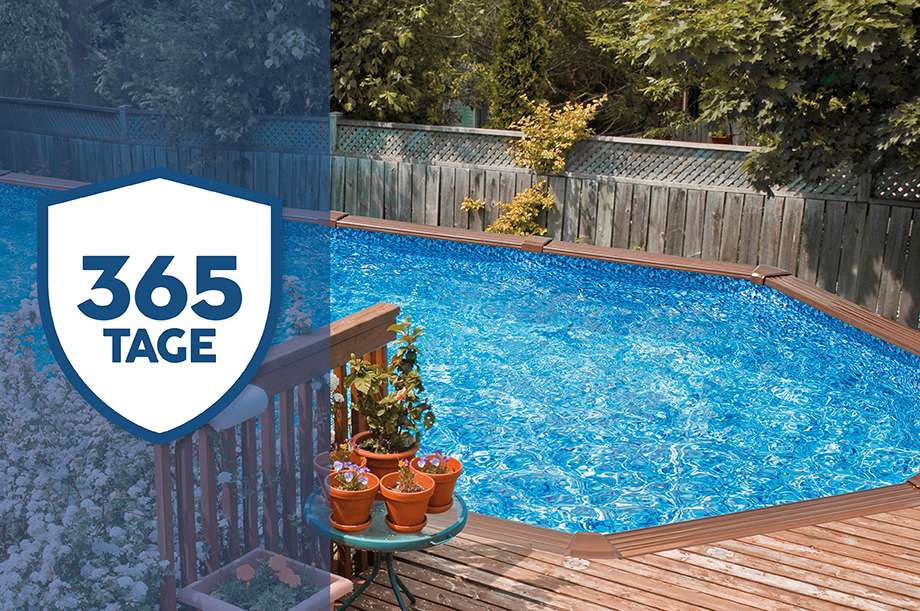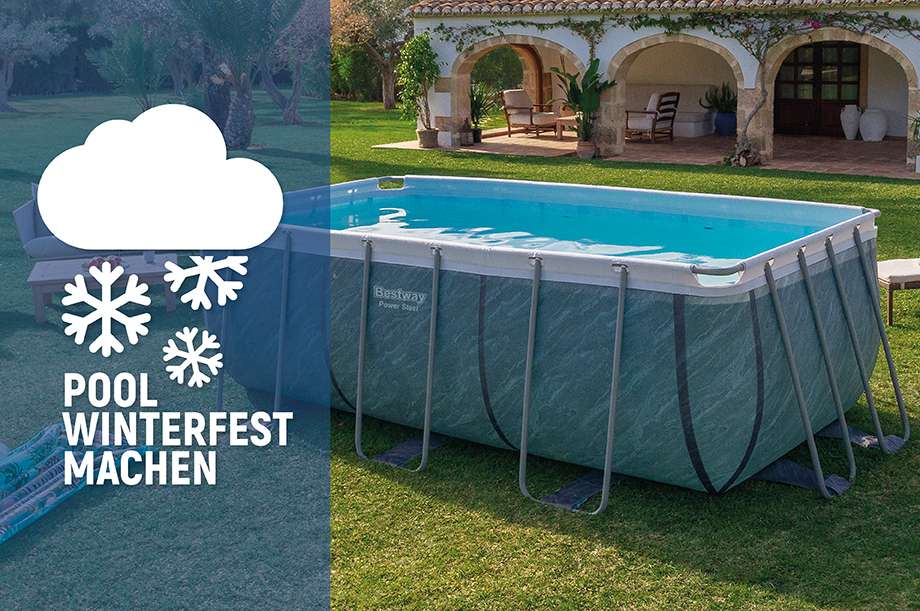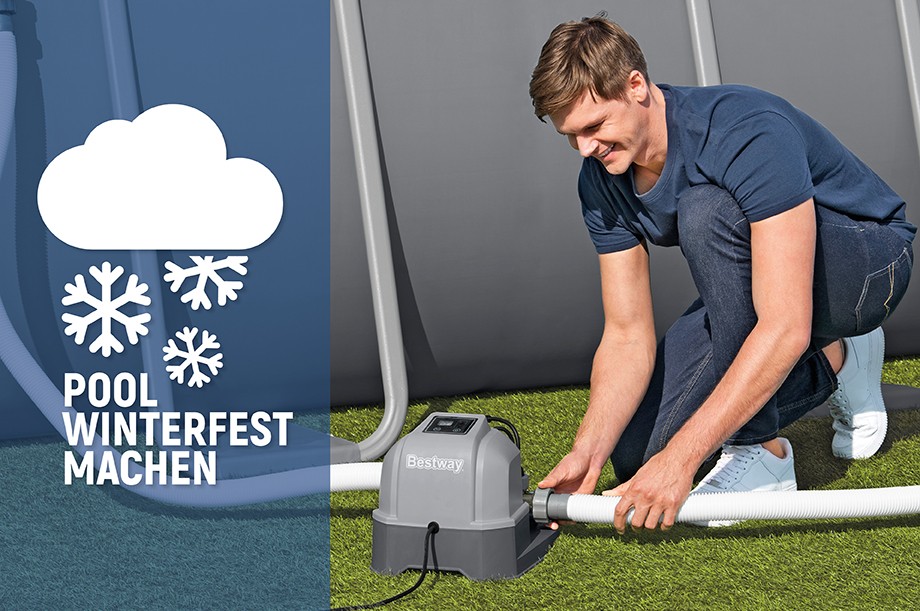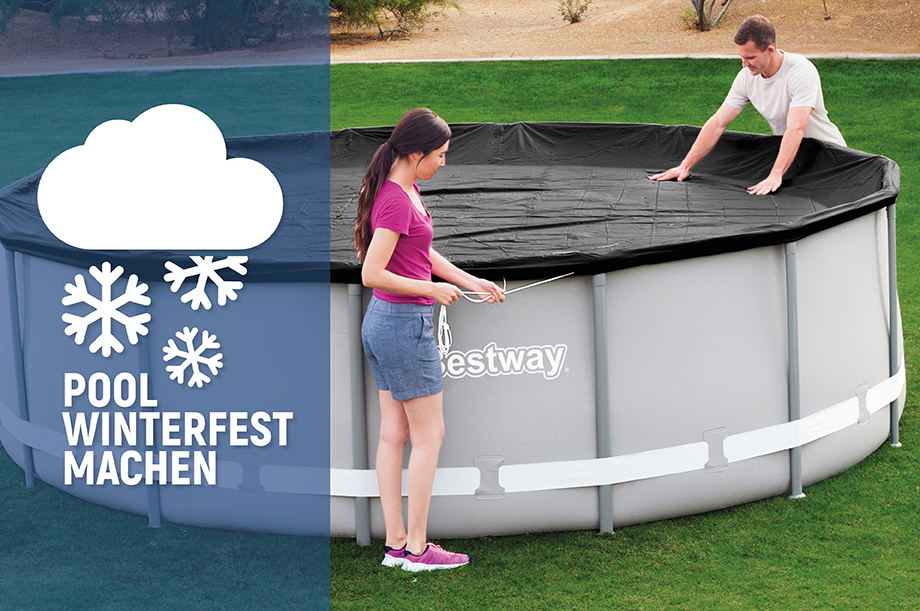Fall is knocking on the door, temperatures are dropping slowly but surely – it's time to winterize your beloved pool! But don't worry, with a few simple steps, your pool is well prepared for the cold months. Let's get started!
Why winterize?
Imagine winter comes with all its frosty splendor and your pool is not prepared – the result? Frost damage that could spoil your fun next summer. Of course, we want to avoid that.

WHICH POOLS CAN BE LEFT IN THE WINTER?
The practical complete sets of the weatherproof Hydrium™ pools are durable and robust. They are set up once and can remain in place during the winter. The current models in the steel-walled pool range come with rust-free components and a new interior design. The high-performance sand filter makes cleaning a breeze and, together with the extra-wide handrail, offers more stability. Don't worry, if you have a Hydrium steel-walled pool, you can leave it outside over the winter.

WHICH POOLS SHOULD BE DISMANTLED?
Do you have a Frame Pool or a Fast Set Pool? Then it's time to dismantle them! These pools are particularly susceptible to frost damage and should be stored safely over the winter months. Please note: If you do not follow the recommendations in the instructions for use, your guarantee and warranty claims will be void.
So, it's better to be safe than sorry!
Step-by-step instructions for winterizing
As soon as the temperatures consistently fall below 8°C, it's time to take the pool down. This is how you prevent frost from damaging your pool.

STEP 1: ADJUST THE CHEMICAL CONTENT IN THE WATER AND CLEAN THE POOL
Make sure the pH is between 7 and 7.4 (7.2 is ideal). If it is too low, use pH-Plus. If it is too high, add pH-Minus. Let the filter system run for 24 hours. The chlorine level should be between 0.3 and 0.6 mg/l. You can also use our salt water chlorinator to maintain the chlorine level. After you have prepared the pool water chemically, clean the pool floor and walls thoroughly with our wide range of pool accessories.

STEP 2: LOWER THE WATER LEVEL
Next, lower the water level to at least 10 cm below the lowest built-in part. This is important so that all built-in parts are out of the water and thus cannot be destroyed by ice. However, the pool should never be completely emptied. The groundwater level must be lower than the water level in the pool, otherwise the liner could be swelled. In this case, the submersible pump is an indispensable tool. With it, you can easily lower the water to the desired level.

STEP 3: WINTERIZE THE FILTER SYSTEM
Drain all water from the filter system and the hoses. Then rinse everything carefully and let it dry completely. Now use the plugs to seal all the pool's connections. This will prevent them from being damaged by ice formation. All components that can be removed from the pool should be stored in a dry place at moderate temperatures during the winter.

STEP 4: STORE POOL EQUIPMENT SAFE FROM FROST
Remove and clean your other pool accessories such as safety ladders, counter-current systems or heat pumps. These should also be stored in a dry place protected from the weather.

STEP 5: USE OF ICE DAMPS AND ANTIFREEZE
Add winterization chemicals in tablet form to the water using a chemical dispenser to prevent algae growth. Position the ice pressure pads diagonally in the pool to reduce pressure on the walls.

STEP 6: COVER THE POOL
A high-quality pool cover is essential to prepare your free-standing pool for the cold winter months and to extend its lifespan. It protects against dirt, leaves and water evaporation and insulates against the cold. When buying, make sure you get the right size, robust materials such as PVC, polyethylene or vinyl, and stable edges with durable eyelets. This investment will make your pool maintenance in the spring considerably easier.
Got any questions?
No worries! Visit our HelpDesk:

